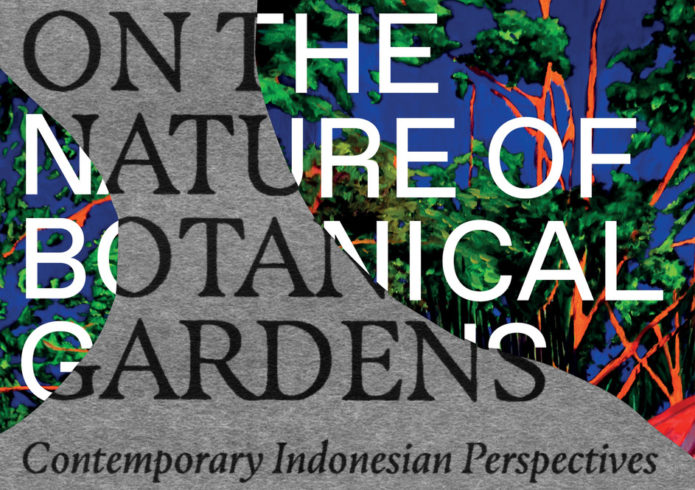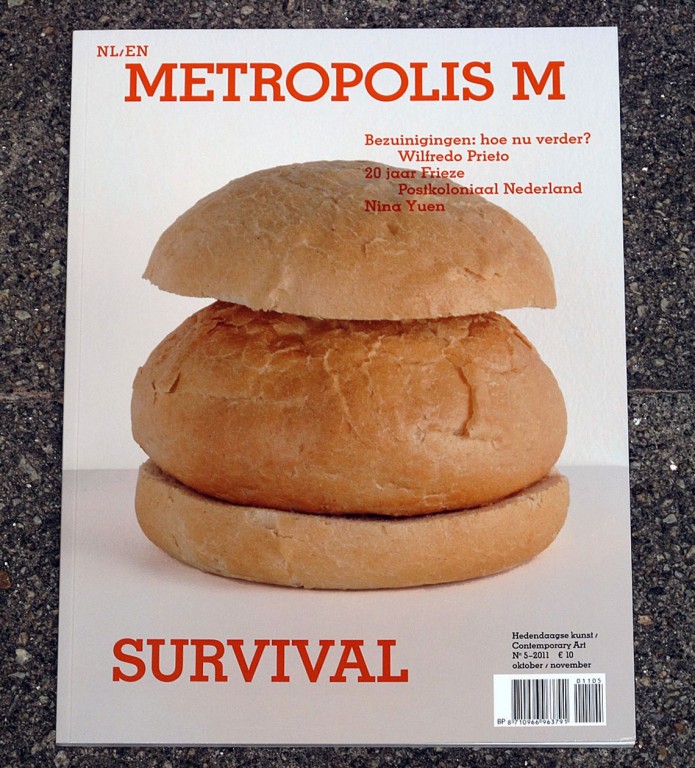
Amsterdam: Postcolonial Processes
July 2020
by Mirthe Berentsen

Installation view of On the Nature of Botanical Gardens curated by Sadiah Boonstra, (2020). Photo: Eva Broekema / Framer Framed.
According to the governmental website for the Municipality of Amsterdam, the city is one of the most multicultural metropolises in the world, with ethnic minorities making up 45 percent of its population. It is often praised for its open and tolerant society, where gay marriage, euthanasia, and prostitution are legal, and drug use is condoned. However, the city has an internal dilemma: its prosperity and supposed freedoms are unequally distributed. In terms of culture, this is reflected in the lack of diversity in Amsterdam’s museums and arts platforms.
The Dutch capital has made efforts to rectify this situation, but its initiatives have thus far seen uneven results. Since 2019 in order to avoid funding cuts from the municipal government, public arts organizations must show that they have policy plans for diversity, equality, and inclusion. This is no problem for the renowned academies such as De Rijksakademie and De Ateliers, as approximately half of their resident artists come from abroad.
What the government’s stipulation overlooks though is that the country’s cultural asymmetry has deep roots. This is linguistically evident. In 2015, the Rijksmuseum decided to set up a special taskforce to critically assess the terminology used in the museum’s object descriptions. Racial slurs such as nigger, kaffir, and hottentot were removed from records as a result of this process. The National Museum of World Cultures published Words Matter in 2018, a guide to inclusive word choices for the cultural sector.
In September 2019, the Amsterdam Museum too began to re-evaluate its historiography, and decided to no longer refer to the 16th–17th centuries as the “Golden Age,” a term commonly used to denote when Amsterdam was one of the world’s most dominant trading ports, and the Dutch held colonial territories in Indonesia, Suriname, and the Antilles. The Museum reasoned that the phrase whitewashes the poverty, war, forced labor, and human trafficking that the Dutch wreaked during this era. Yet, at a press conference, Dutch prime minister Mark Rutte responded: “I will carry on calling it the ‘Golden Age.’ Let’s not waste our energy on renaming the Golden Age, a beautiful term.” This reflects what British historian Paul Gilroy coined the “postcolonial melancholia” of the Netherlands—the nation’s mournful attitude towards its loss of imperial power and prestige. In this context, discussions about Dutch colonial history have caused significant societal and political divisions.
Other institutional efforts to address Dutch colonialism include the 2018 exhibition “Revolusi in the Stedelijk” at the Stedelijk Museum, a restaging of a 1947 show featuring works by 20th-century Indonesian painters Agus and Otto Djaya. At the Rijksmuseum, as part of the institution’s vow to address the “black pages of history as an inseparable part of Dutch history,” there is a show on slavery planned for the second quarter of 2021. Later in the year, the museum will hold “Revolusi!,” centering the struggle for independence in the Dutch East Indies. Still, critics have argued that these actions are not enough, particularly considering the latter museum still holds many objects of dubious origin. Debates on the ethical quandaries of keeping looted art in public collections have only just started to gain momentum.
Among the more successful enterprises is the Stedelijk Museum and Van Abbemuseum’s collaborative project “STUDIO i,” launched in 2017 to improve accessibility for visitors with dementia, or visual or hearing impairments.
Another important activist voice comes from the Black Archives. In addition to being an archive of written and oral histories, since its birth in 2015, the platform has been a meeting place where marginalized histories, told from black and other perspectives, are preserved and shared via open dialogues and exhibitions.
In the east of Amsterdam, the nonprofit Framer Framed is similarly dedicated to critical historiographies and the examination of intercultural processes. Its 2020 show On the Nature of Botanical Gardens featured nine contemporary Indonesian artists looking at the colonial power structures at work in representations of botanical gardens. Displays such as the installation of Sinta Tantra, depicting the gardens of “Buitenzorg,” the Dutch colonial name for the city of Bogor on the island of Java, investigate how the distribution of Indonesian plants, herbs, and knowledge to the Netherlands left voids in Indonesia, not only in biological and economic terms but foremost in cultural memory.
Not coincidentally, Bogor was one of the first stops on the Dutch royal family’s tour to Indonesia in March 2020. It was there that King Willem-Alexander offered an official apology to Indonesian president Joko Widodo and ceremonially returned a kris (traditional dagger) that belonged to Prince Diponegoro, the leader of the mass rebellion against Dutch colonial rule in the 19th century. Long believed to be lost, the extraordinary object was previously part of the Dutch State Collection, and was one of 1,500 historical artefacts recently returned to Indonesia. A critical first step.
Art Asia Pacific 119
AUTHOR: Mirthe Berentsen (the article is published with the permission of the author).
- The Art Newspaper - Decolonising museums: the new network opening up the diversity debate in the Netherlands
- Art Asia Pacific
Links
Indonesia / Colonial history / Contested Heritage /
Exhibitions

